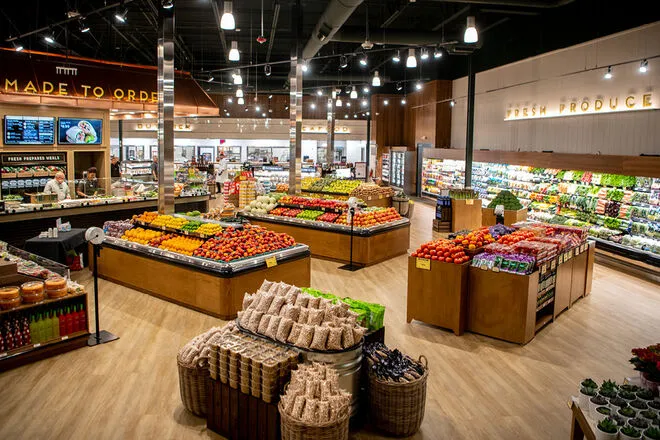Are you the sort of person who always seems to spend a fortune at the grocery store? You walk into the mart with a modest list of items you want to buy and come home with a truck full of stuff.
If that sounds like you, don’t worry: you’re not alone. Millions of people fall into this trap. Their self-control is iron-clad until the moment they collect their shopping cart and start grabbing items off the shelf. Then, all planning goes out of the window.
Fortunately, that’s where this post can help. We look at what pro strategists recommend you do to ensure a frugal grocery shopping trip. By the end, you will understand how to protect your bank balance from ever-inflating food prices.
Plan Your Meals
Start by planning your meals for the week. Work out what you will eat every day to avoid buying items you don’t need.
For example, your meal plan for dinners might look something like this:
- Monday – Vegetable bean chili with rice
- Tuesday – Stir-fried tofu with noodles
- Wednesday – Baked sweet potato with hummus and salad
- Thursdays – Red lentil and mint dal with cauliflower
- Friday – Bean burgers with pitas and lettuce
Once you know what you will eat, grocery shopping becomes far easier. By definition, you won’t be eating anything off the list this week, so there’s no point buying it.
Bulk-Buy
Buying in bulk is another tactic you can use to lower the cost of grocery shopping. Stores will often offer heavy discounts to customers who purchase higher-weight products.
Bulk-buying is a particularly effective strategy for long-lasting store cupboard items like chips and tins. Discounts often lie in the 20% to 50% range.
Buy Generic
Buying generic is also something you could try. Unbranded products are often less than half the price of their branded rivals and similar quality these days.
Historically, it was harder to find generic items – grocery stores didn’t offer them. But with ever-increasing demand for better value, they become more commonplace. Now almost every grocery store offers them.
In many cases, generic products are made in the same factory as their branded alternatives. That’s why they taste the same.
Generic staples include things like:
- White rice
- Pasta
- Tins of beans
- Bread
- Chicken
- Frozen vegetables
These items can form the bulk of your meals. Then you can add more expensive branded products on top if necessary.
Stick To A Grocery Budget
Sticking to a grocery budget is another tactic you can use. Setting out what you will spend before going to the store can discipline your choices.
If you set a budget, use in-store tools to track your expenses. Most grocery retailers offer scanners you can use to keep a running total of everything in your cart.
Be realistic when deciding on spending. It’s unlikely you can live well on $10 per week. Prioritize your nutrition and then see how much you need to spend. A frugal budget between $30 and $50 per person, per week, is more realistic.
Remember to factor in everything you buy from the grocery store (like toilet roll and dish soap). These prices also contribute to the final bill.
You can also take cash with you (no cards). This approach forces you to stick to a budget and return items to the shelves if you can’t afford them.
Buy Less Meat
It might not be a popular idea, but buying less meat is another effective way to shop more frugally. Skipping on beef, pork, bacon, chicken, and fish can reduce your bill by a third or more.
For protein, rely more on cheap plant sources, like beans and lentils. These are among the most affordable and health-promoting foods on the planet.
You can also buy soy milk. Because of wholesale milk prices, it is often cheaper than conventional cow’s milk.
Meat substitutes are sometimes an option for saving money, but not always. Texturized soy protein is inexpensive, but other branded products aren’t, so be careful.
Use The Freezer Aisle
Everyone knows the fresh produce aisle is expensive. A punnet of strawberries could set you back $5 or more. By contrast, you can often find substantial savings on the freezer aisle.
Frozen food costs less because it is simpler to store and keep. Like ambient products, it is less prone to wastage, so grocery stores don’t need to factor that into the price.
Furthermore, it is often better for you. Producers can pick and store food closer to ripeness, enhancing the flavor.
Many freezer aisle items are bulk-buy options. These slash the price further, allowing you to buy weeks worth of food for a few dollars.
Put Leftovers To Use
Putting leftovers to use is another way to make grocery shopping more frugal. Avoiding waste ensures every calorie you buy powers your body.
You can put leftovers to use by:
- Planning to use them in subsequent meals (such as adding leftover beef mince to pasta dishes)
- Adding ingredients to smoothies and juices
- Using clever seasonings and flavorings to turn them into brand-new dishes
- Putting them in reusable containers and storing them in the freezer until you need them
You can also avoid leftovers entirely by controlling portions better. Adding less food to each plate reduces the risk of wastage.
Clip Coupons
Many grocery stores still accept clipped coupons. These help you lower the price of a food shop substantially, reducing the price you pay.
You can also sign up for the store’s app and get it to generate discounts for you automatically. Get money off baked items, tins, nuts, and fresh produce.
Check The Unit Cost
Finally, always ensure you check the unit price. Look at how much a particular item costs per 100g (or equivalent). Sometimes the price of one product will seem higher than another, but it is a mirage because you get more for your money.
Wrapping Up
As we have seen, it is possible to save substantial sums of money when grocery shopping. But you need to have your wits about you. Grocery stores try numerous tactics to get you to spend more, and they can be highly effective, so be careful.


